We've had the housing boom, here comes the house price bust
Following a week-on-the-road meeting with clients, the most common questions I’ve been asked surround interest rate rises. Some of the effects of rate increases across the globe have been more obvious than others (see prices of high valuation tech stocks).
However, in Australia the most interest rate sensitive area of the economy and one yet to fully bear the pain of interest rate adjustments is housing. This has big implications for the broader economy and investors.
We have had the boom, and now we will have the bust. The question is just how big the fall will be. We believe the correction will likely erase all the house price gains seen during the COVID-19 period when prices soared to unsustainable heights. This would equate to the largest peak-to-trough decline on record, vastly eclipsing the previous correction of 10.2% in 2017.
As illustrated below, it is already the fastest (Chart 1) and there is much further to fall back to the levels of January 2020 (Chart 2).
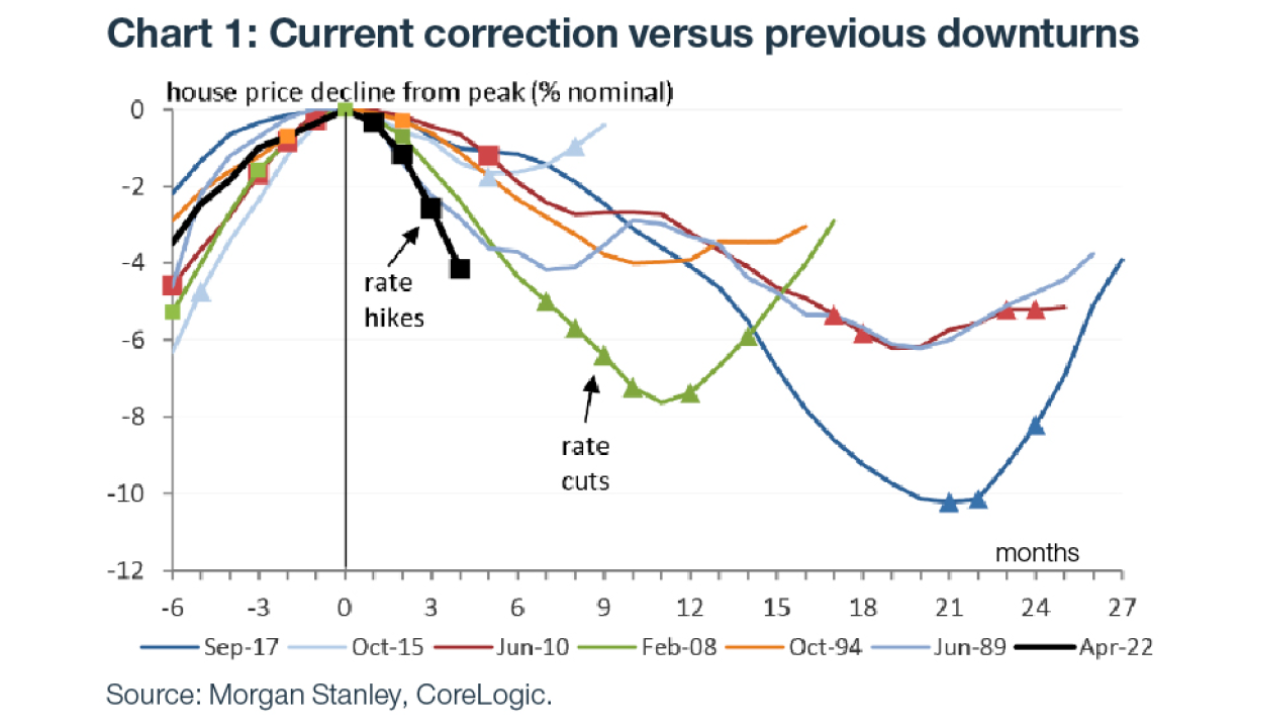.png)
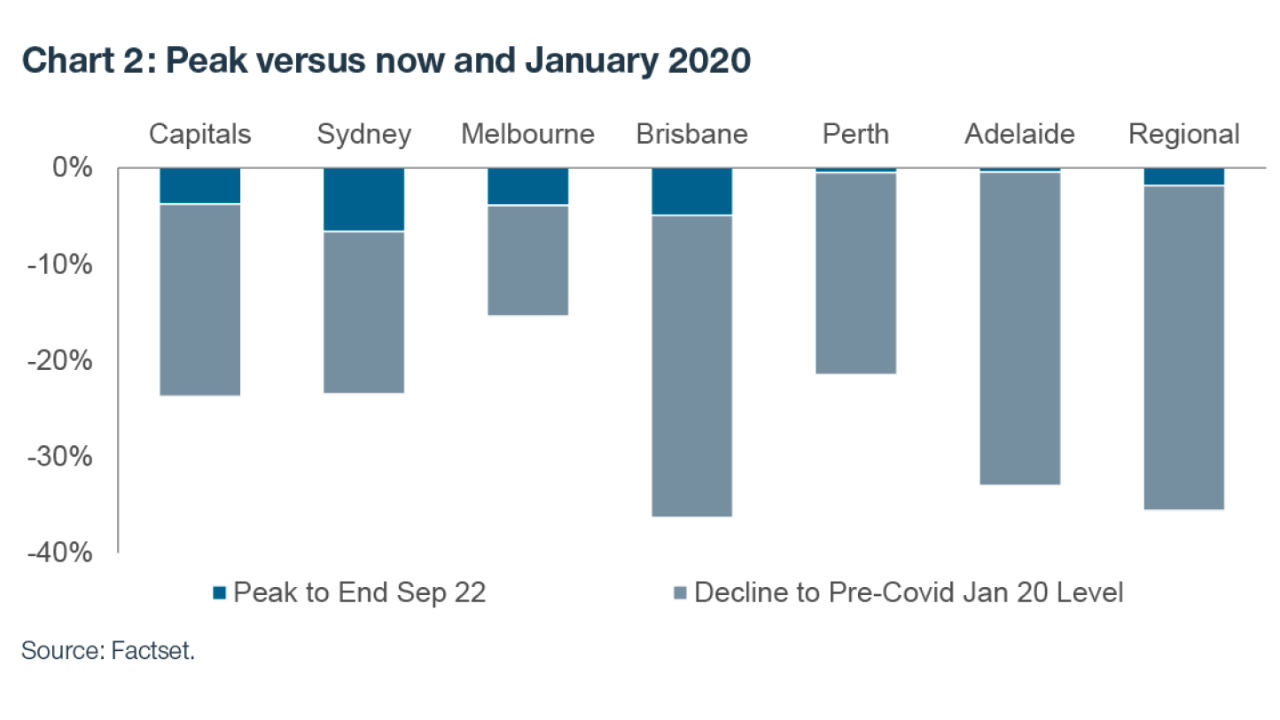.png)
Another takeaway from past cycles is that price falls typically continue until we see the RBA not only stop rate hikes but shift into reverse and start to cut.
At this stage, rate reductions seem like a high hurdle given the board’s determination to bring inflation back within a more tolerable band. Indeed the RBA has modelled its own expectation of housing price falls and seems comfortable with a 20% decline over two years. When was the last time our central bank was unperturbed by such a level of house price decline? As we know asset price declines are unpredictable and aren’t easy to control (both up and down)!
A large portion of Australian borrowers is still yet to feel the full effect of the RBA’s hikes to date. This is given the substantial proportion of loans written during the COVID-19 period were at very attractive fixed rates.
As a percentage of all loans, fixed-rate mortgages ballooned from 15% pre-COVID to 46% of new lending at its peak (Chart 3). We estimate that approximately 50% of the current residential mortgage loans on banks’ balance sheets were written over the COVID-19 period.
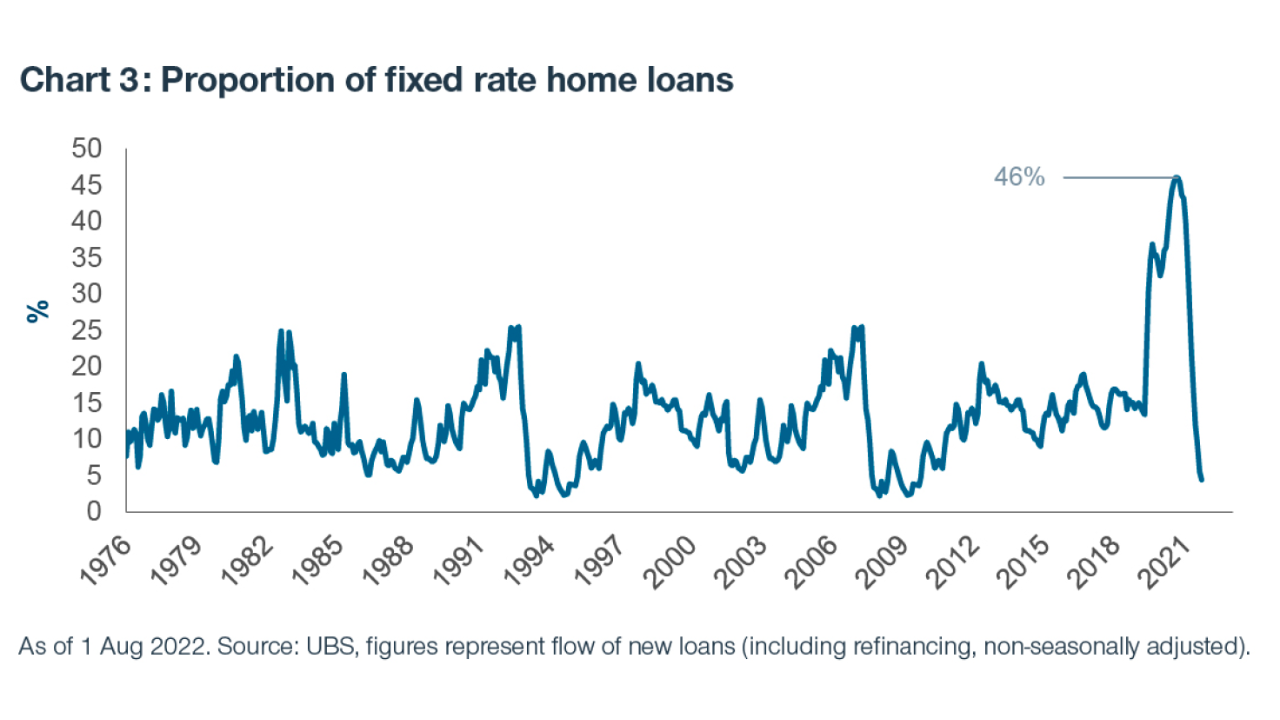.png)
The risks associated with writing housing loans, in one of the biggest housing booms and lowest unemployment periods in decades, will be evident in coming years.
This translates to an enormous wave of mortgages that will transition to variable rates in 2023. The average fixed rate of roughly 2% will move to a rude variable rate of 6.5% at current forecasts. The debt servicing ratio (the proportion of household income that goes to principal and interest payments) is expected to rise to a record high of 18.4%.
Australia is much more sensitive than its US counterpart in this respect. For perspective, variable rate mortgages make up only 5% of US mortgages. Debt servicing there is expected to only rise to 7.6%.
The sensitivity to such rate increases is compounded by the high level of household debt in Australia (5th most indebted in the OECD). At its peak during the COVID-19 period, a quarter of all new loans were written at a debt-to-income ratio of more than 6.
The combination of these factors ranks Australia as the 3rd most rate-sensitive housing market globally.
That said, one potential source of support is the savings buffer that was built during COVID-19 as expenses were slashed and transfer payments were squirreled away. This would help households bear the brunt of mortgage rate increases in the near term.
However, this savings buffer is rapidly evaporating (higher cost of living expenses such as energy prices also impacting) and will not sufficiently protect households from their mortgage adjustments next year (Chart 4). The RBA’s Financial Stability Report highlighted that under current forecasts, even if variable-rate borrowers reduced their spending by 20%, a third would deplete their buffers within 6-24 months.
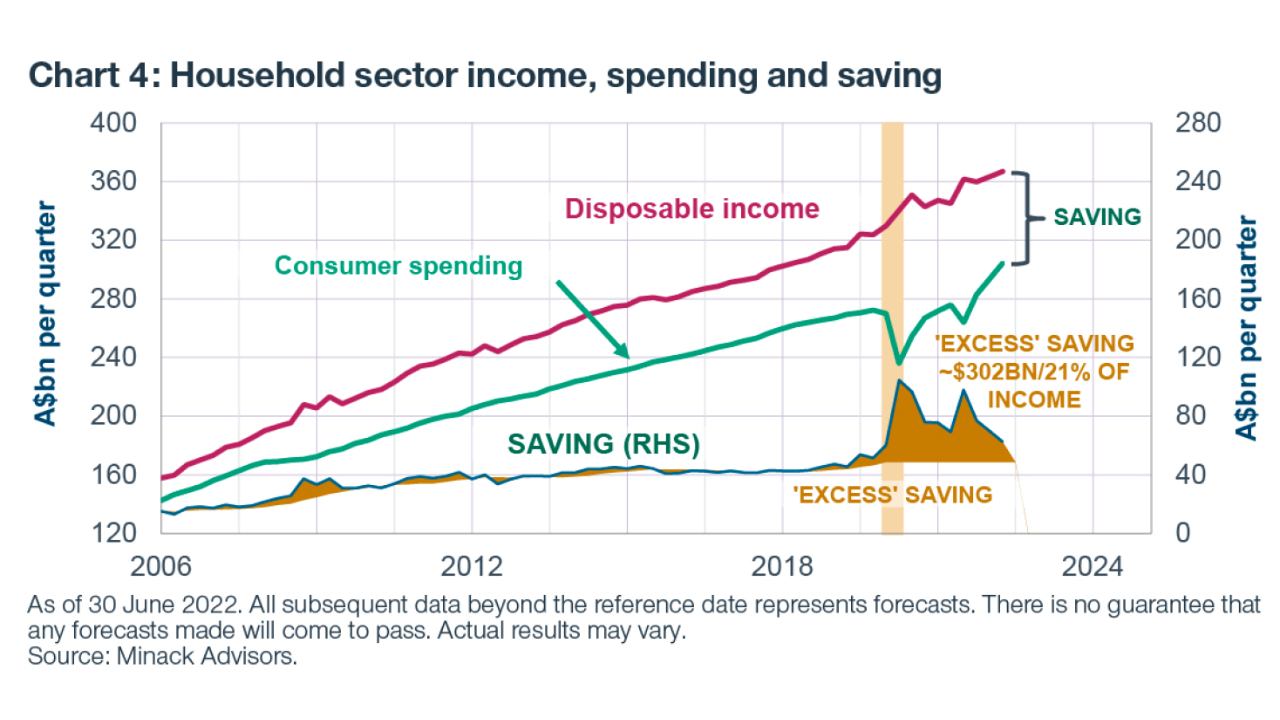.png)
Not only will there be a hit to spending in order to meet higher mortgage costs, but the wealth effect will be real. Housing makes up roughly 68% of household sector net wealth, for a total of A$10 trillion.
A simple calculation tells us that for a 20% fall, A$2 trillion of household wealth would be destroyed. In turn, falling prices should deflate some of the more boisterous consumer activity witnessed when homeowners saw the value of their primary asset rise so dramatically (Chart 5).
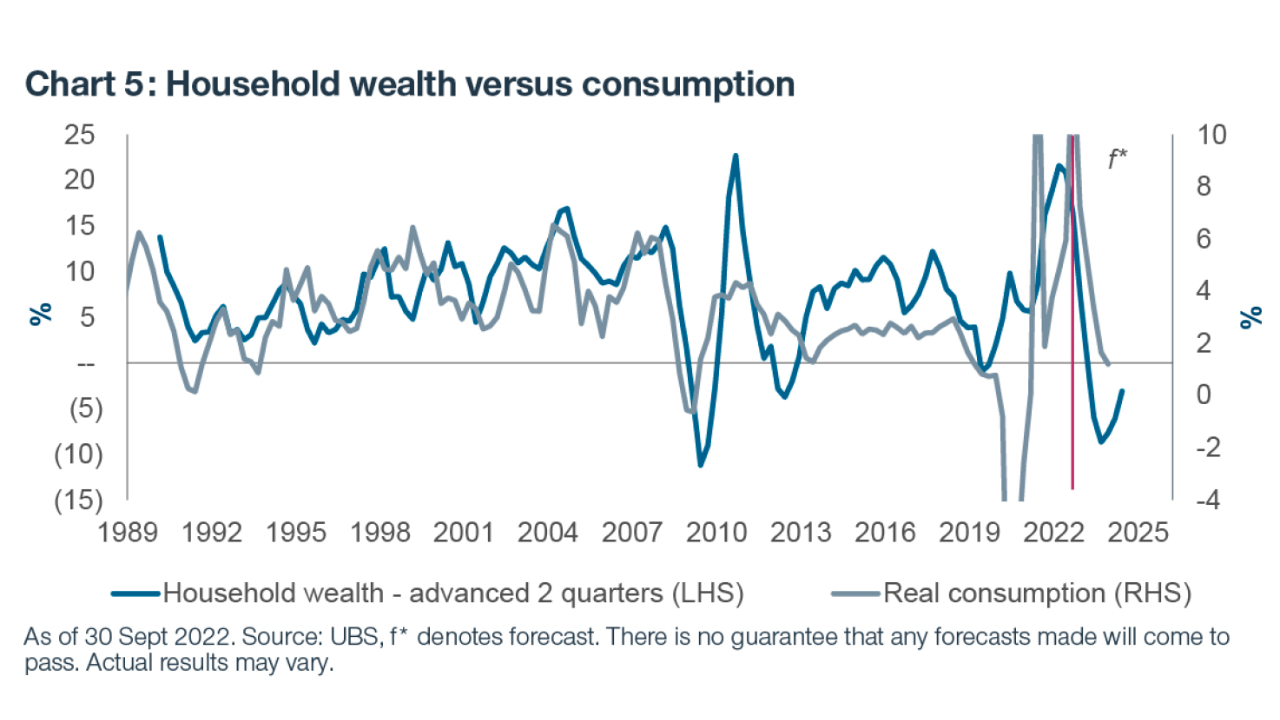.png)
Finally, the flow-on effects on construction are worth noting. 1 in every 10 jobs is tied to housing and construction. This contributes roughly 7.5% to GDP.
Currently, we are sitting in a construction backlog, blocked by supply constraints, labour shortages, and weather. As such the decline in construction activity will lag prices by longer than usual. However, as this blockage eases, construction should follow the substantial fall in building approvals and prices lower.
In what is a passionate topic for Australians, I probably have not made any new friends by highlighting the extent of the woes facing the local housing market. At the same time, we emphasise the importance to understand these issues and positioning them appropriately.
Our outlook and positioning have been cautious since late last year and we continue to prefer more defensive quality exposures that we believe will be better placed to weather the downturn.
Invest with confidence
T. Rowe Price focuses on delivering investment management excellence that investors can rely on—now and over the long term. Hit the 'follow' button below for more of our investment insights.

3 topics
1 fund mentioned
1 contributor mentioned

